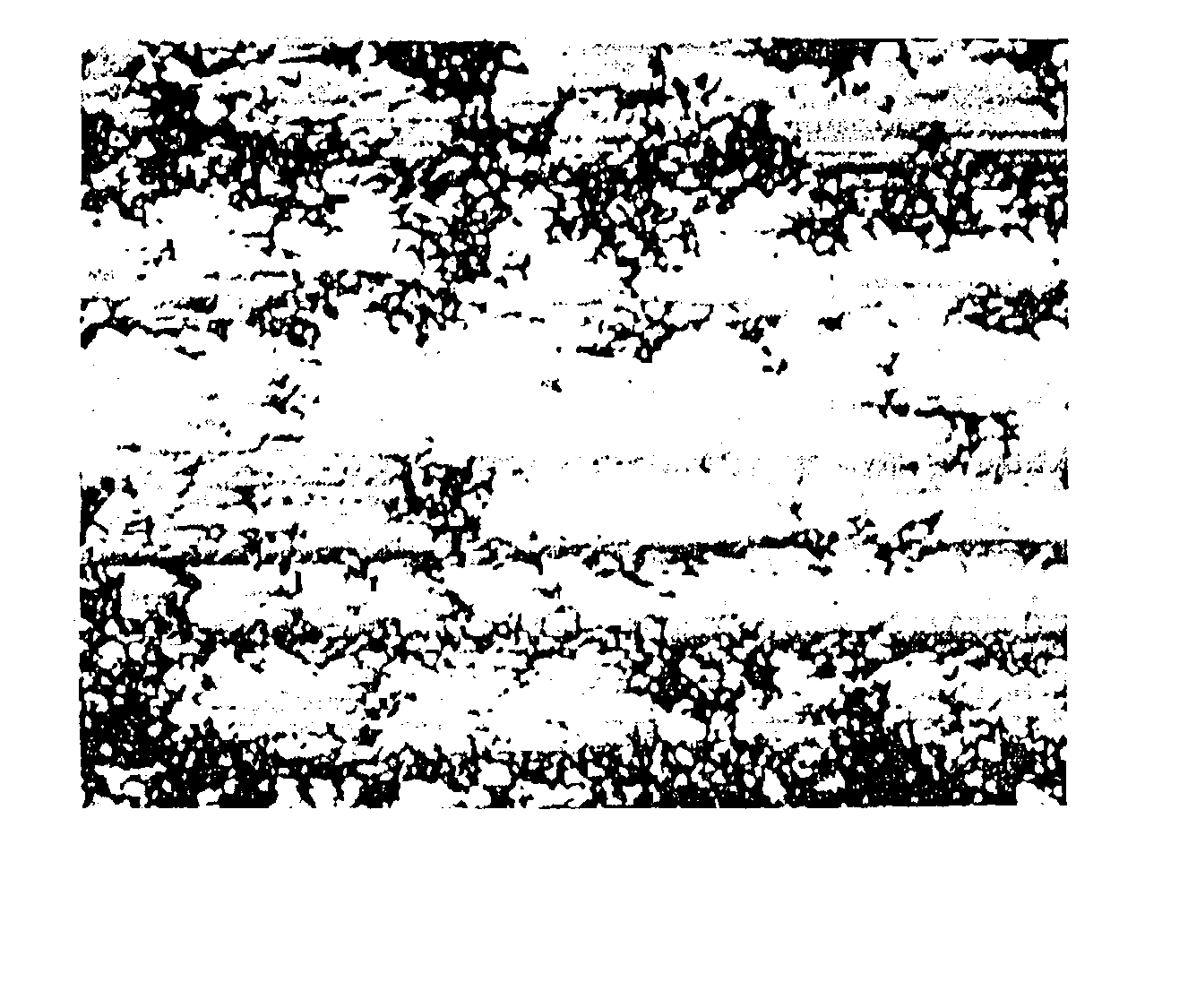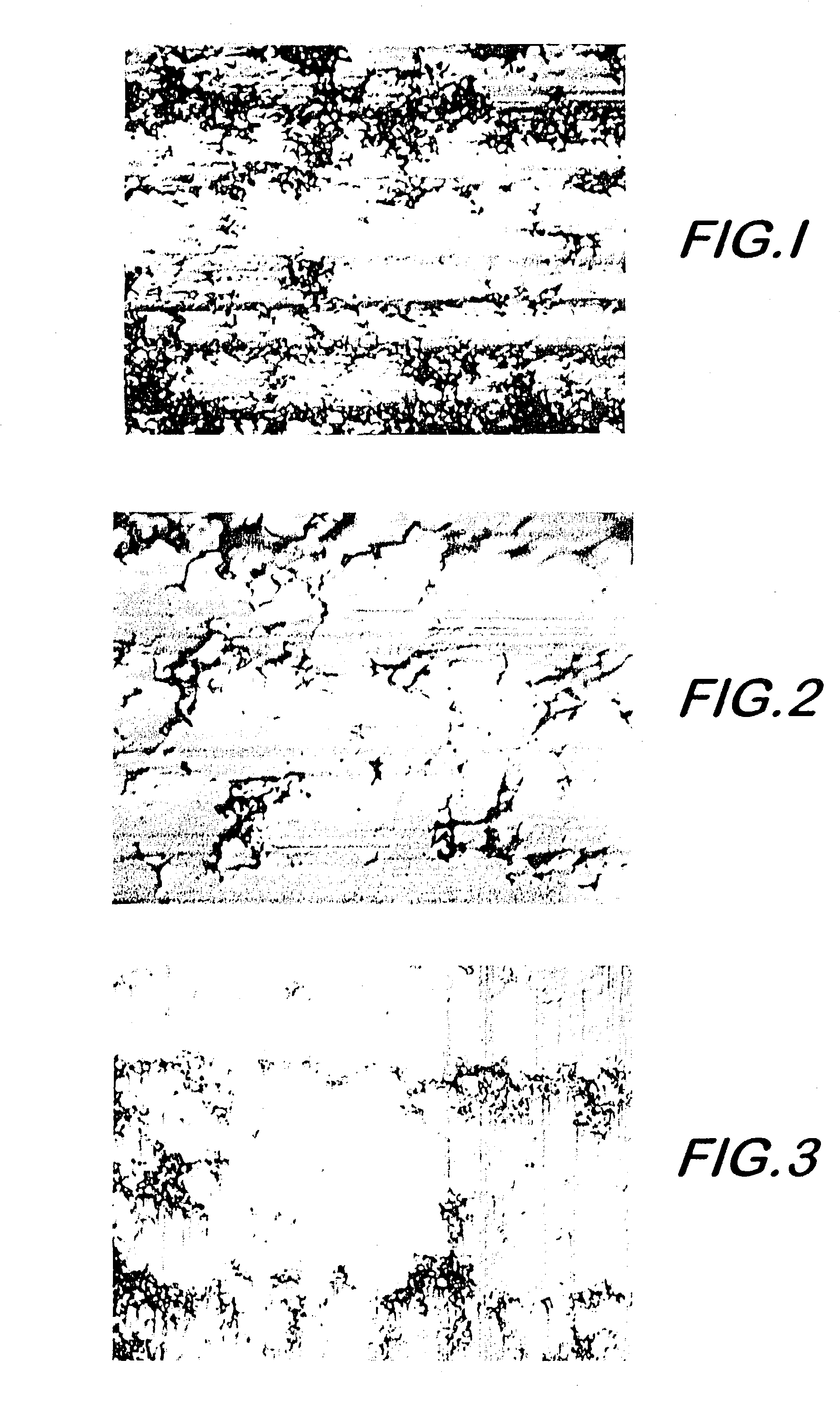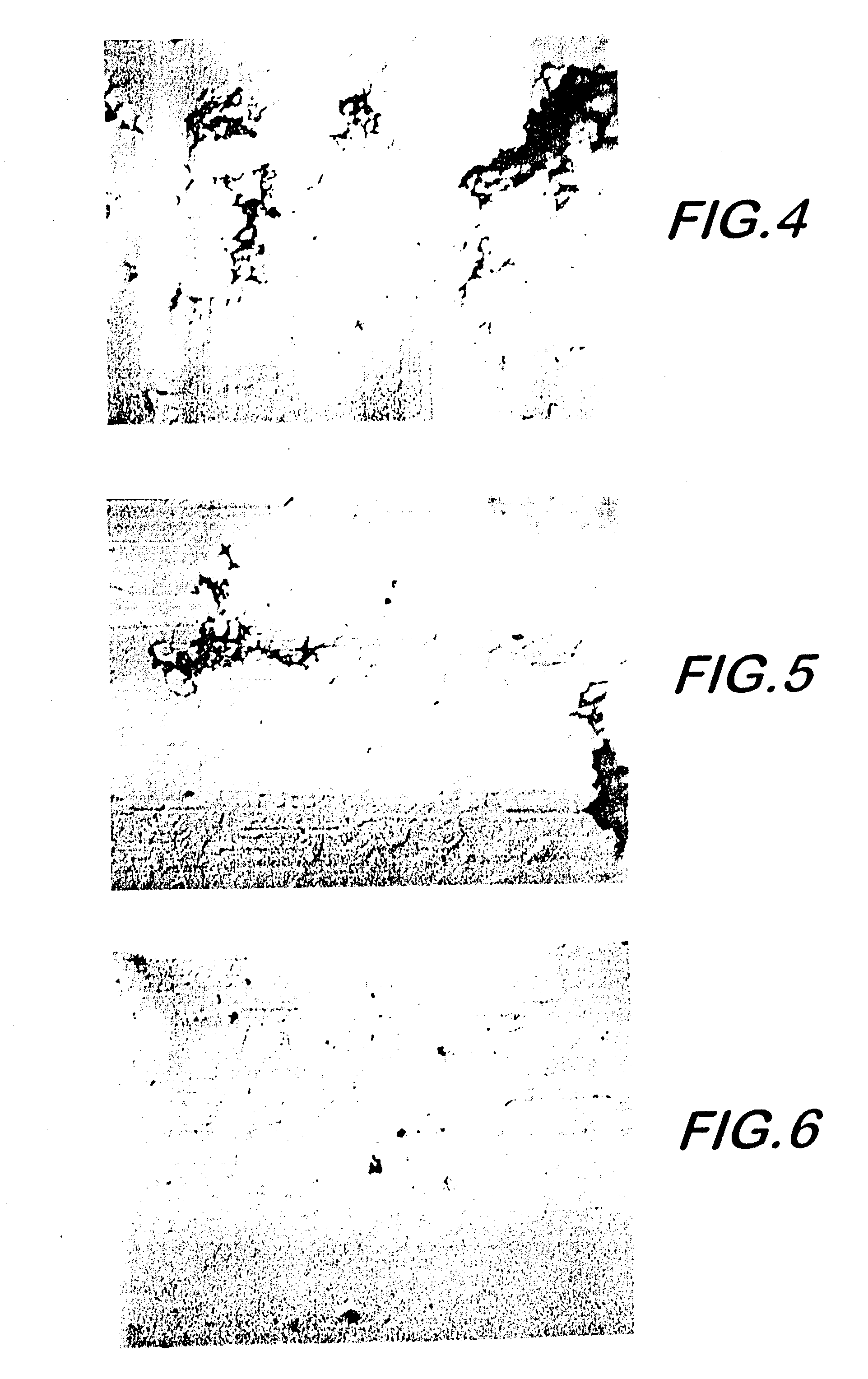Grinding and polishing tool for diamond, method for polishing diamond, and polished diamond, single crystal diamond and single diamond compact obtained thereby
a diamond and polishing tool technology, applied in the field of diamond grinding and polishing tools, can solve the problems of insufficient use, low processing efficiency, and difficult polishing of diamond, and achieve the effects of stable polishing quality, stable abrasion performance, and convenient operation
- Summary
- Abstract
- Description
- Claims
- Application Information
AI Technical Summary
Benefits of technology
Problems solved by technology
Method used
Image
Examples
example 1
[0122] A TiFe.sub.2 intermetallic compound polishing grinder was produced under the foregoing conditions, and the foregoing diamond thin film was polished at room temperature using the above grinder. Polishing was carried out at a grinder rotation speed of 3000 rpm for 1 minute.
[0123] The results are shown in FIGS. 1 and 2. FIGS. 1 and 2 are differential interference microphotographs with a magnification of .times.400 and .times.1000, respectively, of the diamond thin film after polishing.
[0124] In FIGS. 1 and 2, the black shadowy portions designate the unpolished portions and the white portions which may look grayish in the photograph designate the polished portions. As can be seen, the polishing rapidly progressed in just one short minute.
[0125] Although the polishing was carried out at room temperature, only a little wear took place in the grinder, and no cracks or fractures were observed. The TiFe.sub.2 intermetallic compound polishing grinder exhibited a high polishing performa...
example 2
[0126] A TiCo intermetallic compound polishing grinder was produced under the foregoing conditions, and the foregoing diamond thin film was polished at room temperature using the above grinder. Polishing was carried out at a grinder rotation speed of 3000 rpm for 1 minute. The results are shown in FIGS. 3 and 4. FIGS. 3 and 4 are differential interference microphotographs with a magnification of .times.400 and .times.1000, respectively, of the diamond thin film after polishing.
[0127] In FIGS. 3 and 4, the black shadowy potions designate unpolished portions and white portions which may look grayish in the photograph designate the polished portions. As can be seen, the polishing rapidly progressed in just one short minute, just as in the above example. Although the polishing was carried out at room temperature as in the above example, only a little wear took place in the grinder, and no fractures or cracks were observed. The TiCo intermetallic compound polishing grinder exhibited a hi...
example 3
[0128] A TiNi intermetallic compound polishing grinder was produced under the foregoing conditions, and the foregoing diamond thin film was polished at room temperature using the above grinder. Two types of polishing were carried out at a grinder rotation speed of 3000 rpm for 1 minute and 5 minutes, respectively.
[0129] The results are shown in FIGS. 5 and 6. FIGS. 5 and 6 are differential interference microphotographs with a magnification of .times.1000 of the diamond thin film after the 1-minute polishing and the 5-minute polishing, respectively. The optical microphotograph with a magnification of .times.1000 of the unpolished diamond thin film shows the same uneven surface as in FIG. 11 as will be described below.
[0130] In FIG. 5, the black shadowy portions designate unpolished portions and the white portions which may appear grayish in the photograph designate the polished portions. A step along the crystal grains is hardly observed in the figure. This indicates that polishing r...
PUM
| Property | Measurement | Unit |
|---|---|---|
| temperature | aaaaa | aaaaa |
| temperature | aaaaa | aaaaa |
| thickness | aaaaa | aaaaa |
Abstract
Description
Claims
Application Information
 Login to View More
Login to View More - R&D
- Intellectual Property
- Life Sciences
- Materials
- Tech Scout
- Unparalleled Data Quality
- Higher Quality Content
- 60% Fewer Hallucinations
Browse by: Latest US Patents, China's latest patents, Technical Efficacy Thesaurus, Application Domain, Technology Topic, Popular Technical Reports.
© 2025 PatSnap. All rights reserved.Legal|Privacy policy|Modern Slavery Act Transparency Statement|Sitemap|About US| Contact US: help@patsnap.com



